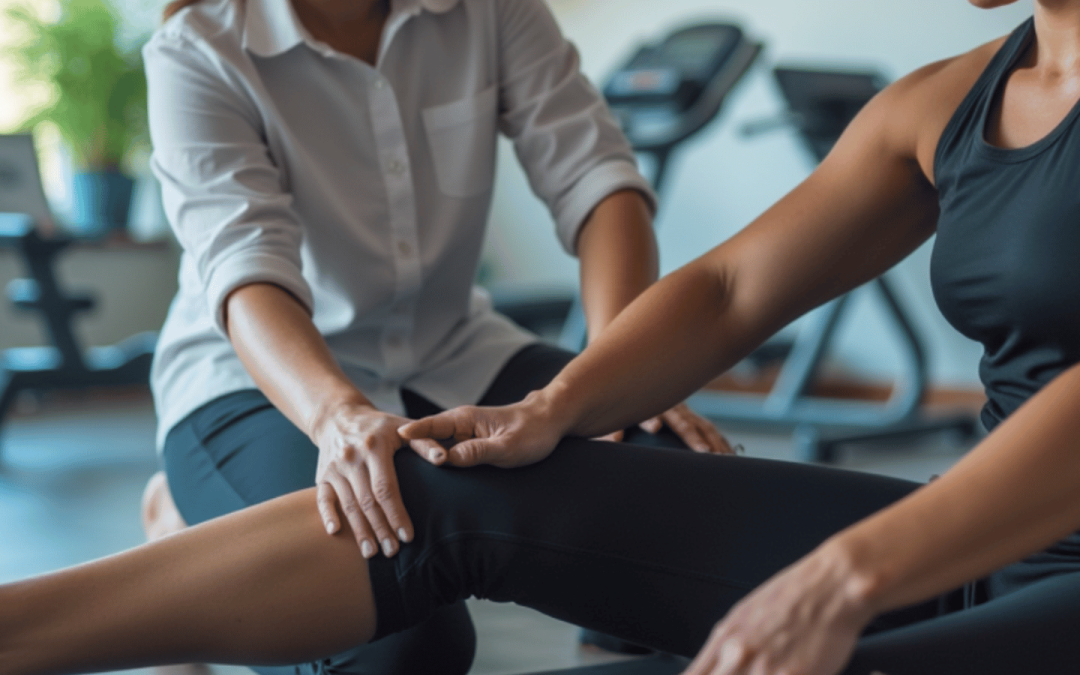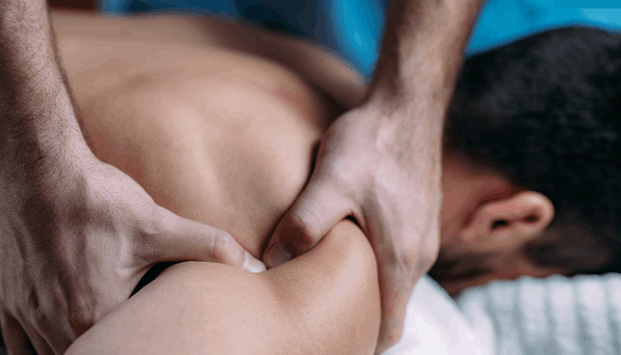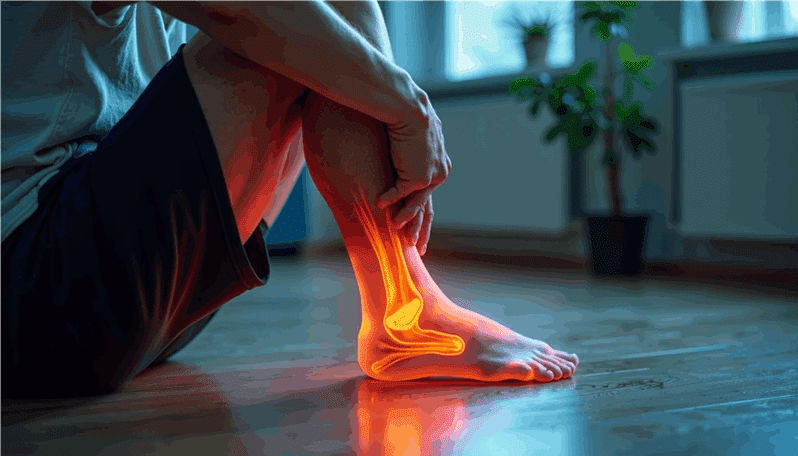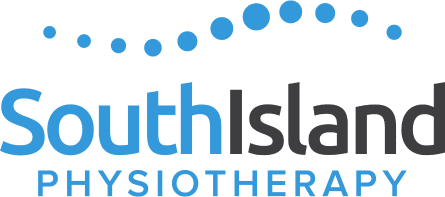
by Colin Beattie | Jun 26, 2025 | news
How Physiotherapy Plays a Crucial Role in Preventing Sports Injuries
Participating in sports and exercise offers numerous physical and mental health benefits. However, with increased physical demands comes an increased risk of injuries. Sports-related injuries—ranging from minor sprains to serious ligament tears—can disrupt training, competition schedules, and even end athletic careers. Fortunately, physiotherapy plays a crucial role in both treating and preventing sports injuries, offering targeted strategies to reduce the likelihood of injury and enhance athletic performance.
The Role of Physiotherapy in Sports Injury Prevention
Physiotherapy is a specialized branch of healthcare that focuses on optimizing movement, enhancing physical function, and preventing and rehabilitating injuries. Sports physiotherapy specifically addresses the unique needs of athletes, considering the physical demands of each sport and tailoring programs accordingly.
Injury prevention strategies developed by sports physiotherapists are based on current scientific evidence and include assessments, individualized exercise plans, manual therapy, and ongoing education. Integrating physiotherapy into an athlete’s routine can significantly reduce the risk of injuries—especially overuse injuries and repetitive strain injuries that accumulate from continuous training.
A systematic review by Lauersen et al. (2014) in the British Journal of Sports Medicine found that exercise-based physiotherapy programs reduced sports injuries by over 50%. This included reductions in both acute and overuse injuries across various sports, emphasizing how physiotherapy helps prevent injuries proactively rather than simply treating them after they occur.
Key Aspects of Physiotherapy That Help Prevent Injuries
- Muscle Strength and Neuromuscular Control
Building and maintaining muscle strength is a key aspect of physiotherapy. Weak or imbalanced muscle groups can increase injury risk, particularly in the lower limbs. For example, poor gluteal activation or hamstring weakness is associated with a higher likelihood of knee injuries such as ACL tears.
Physiotherapy programs often include progressive strength training, plyometric exercises, and neuromuscular drills to correct imbalances and improve body control. These methods help prepare the body for physical activities, reducing mechanical errors that lead to injuries.
- Improving Range of Motion and Flexibility
Limited range of motion can make joints and muscles vulnerable to injury. Restricted mobility in the hips or ankles, for instance, can shift stress to adjacent joints, increasing the risk of sprains or muscle tears.
Regular physiotherapy sessions help address these issues through manual therapy, myofascial release, and stretching protocols. Increasing joint flexibility helps the body absorb forces more efficiently, thus reducing injury risks and improving overall sports performance.
- Correcting Movement Patterns and Posture
Improper movement patterns during training or competition can accumulate over time, ultimately resulting in common sports injuries. A sports physiotherapist for injury prevention conducts detailed biomechanical assessments to identify these dysfunctional patterns.
Evidence from studies like the one by Hewett et al. (2005) has shown that correcting faulty landing mechanics in female athletes through neuromuscular training reduces the risk of injuries like ACL tears. Physiotherapy helps athletes relearn proper techniques to prevent future injuries and enhance efficiency in motion.
- Managing Training Loads and Recovery
Many sports injuries are caused by poor load management. Training too much, too soon, without adequate recovery, leads to overuse injuries like tendinopathies, stress fractures, and muscle strains.
Physiotherapy offers guidance on managing these loads by monitoring fatigue, suggesting deload phases, and incorporating recovery strategies such as massage, ice, and mobility exercises. These help not just in treating current injuries but in preventing recurring injuries in athletes with a previous injury history.
Implementing a Physiotherapy-Based Injury Prevention Plan
An effective injury prevention plan should be personalized, sport-specific, and adaptable. It typically includes:
- Initial physical condition assessment to identify baseline strength, mobility, and movement quality.
- A customized exercise regimen that targets weak points and improves biomechanics.
- Regular reassessment and progression, allowing for adaptations based on physical demands and competition schedules.
- Education on posture, self-care, and early signs of injuries.
- Integration of manual therapy to improve mobility and tissue health.
According to the FIFA 11+ program—a structured warm-up program developed with the help of physiotherapists—injury rates in soccer players were reduced by up to 70%. This demonstrates how physiotherapy in sports injury prevention is not only effective but essential at both amateur and professional levels.
Physiotherapy Helps More Than Just the Injured
Contrary to popular belief, you don’t have to wait until you’ve suffered an injury to see a physiotherapist. Regular physiotherapy provides proactive care that reduces the likelihood of injuries and helps athletes stay in peak condition. This applies not only to elite athletes but also to recreational exercisers, youth athletes, and aging populations engaged in sports and exercise.
For those with past injuries, recovering from past injuries doesn’t mean the risk has been eliminated. Scar tissue, altered movement patterns, and reduced strength can increase susceptibility. Physiotherapy can help identify lingering weaknesses and provide targeted strategies to prevent future injuries.
Common Injuries Physiotherapy Can Help Prevent
- Ankle sprains through balance and proprioception training
- ACL tears via neuromuscular control exercises
- Hamstring strains with eccentric strengthening
- Tennis/golfer’s elbow through tendon loading protocols
- Shin splints by correcting gait and managing impact loads
- Rotator cuff injuries with scapular stabilization exercises
Whether it’s acute trauma or a repetitive strain injury, physiotherapy prevents injuries by creating resilience against the most common injuries encountered in sport.
Why Every Athlete Should Integrate Physiotherapy
Athletes and teams that implement injury prevention programs not only see fewer injuries but also improved sports performance due to better mechanics, endurance, and recovery. For young athletes, physiotherapy in sports injury prevention is particularly impactful, laying a foundation of healthy movement habits that help prevent long-term issues.
Moreover, physiotherapy also contributes to psychological readiness. When athletes feel physically strong and supported, their confidence increases—another factor shown to correlate with reduced injury risk.
Final Thoughts
In the world of competitive and recreational sports, injuries are often seen as inevitable. However, with the right approach, many injuries can be prevented. Physiotherapy plays a crucial role in addressing the root causes of injuries, enhancing strength and mobility, and educating athletes on safer training methods.
From developing a personalized injury prevention plan to treating injuries, physiotherapy also prepares the body for the physical demands of sport, making it highly effective. Sports physiotherapy is a specialized and indispensable part of an athlete’s support team. It not only helps prevent injuries but also improves performance and ensures longevity in sport.
If you’re serious about performance and well-being, consider how physiotherapy prevents injuries and supports a safer, stronger future. Whether you’re recovering, training, or competing, physiotherapy helps keep you in the game—and out of the treatment room.
At South Island Physiotherapy, we view injury not as a roadblock, but as an invitation to recalibrate your body and move better than before. Through personalized exercise and expert guidance, you can not only recover—but thrive.
If you’re dealing with an injury or simply want to reduce your injury risk, consult with a physiotherapist today. Together, we can create an exercise routine that aligns with your goals and keeps you doing what you love—stronger and safer than ever.
References:
- Lauersen, J. B., Bertelsen, D. M., & Andersen, L. B. (2014). The effectiveness of exercise interventions to prevent sports injuries: A systematic review and meta-analysis of randomised controlled trials. British Journal of Sports Medicine, 48(11), 871–877.
- Hewett, T. E., Lindenfeld, T. N., Riccobene, J. V., & Noyes, F. R. (1999). The effect of neuromuscular training on the incidence of knee injury in female athletes: A prospective study. American Journal of Sports Medicine, 27(6), 699–706.
- Soligard, T., Myklebust, G., Steffen, K., et al. (2008). Comprehensive warm-up programme to prevent injuries in young female footballers: cluster randomised controlled trial. BMJ, 337, a2469.

by Colin Beattie | Jun 16, 2025 | news
Regaining Strength and Confidence: Rehabilitation for Age-Related Mobility Issues
Mobility challenges are among the most common concerns for older adults — and one of the most impactful on quality of life, which is why physiotherapy for senior mobility is incredibly important. As we age, it’s not uncommon for everyday tasks like climbing stairs, walking on uneven surfaces, or getting out of a chair to become more difficult. This gradual decline in a person’s ability to move or perform daily activities can significantly affect independence, mood, and physical health. But here’s the good news: rehabilitation and structured physical activity programs can help seniors stay active, reduce the risk of falling, and maintain mobility and independence well into later life.
Why Do Many Seniors Experience Mobility Issues?
After age 65, the body undergoes changes that can contribute to mobility problems. These include:
- Muscle weakness and loss of muscle strength (sarcopenia)
- Joint stiffness and pain, often due to arthritis
- Poor posture and reduced range of motion
- Slower reaction times and balance impairments
- Decreased heart and lung capacity
These factors not only affect mobility but also increase the risk of falling, which is a major cause of injury and hospital stays among older people. Seniors experience what some researchers call “mobility decline,” where several mild problems, such as joint issues, reduced flexibility, or a fear of falling, can collectively lead to a significant limitation in movement.
How Rehabilitation Helps Seniors Improve Mobility
Rehabilitation aims to restore a person’s ability to move around confidently and safely. For older adults, the goal is often to maintain or regain enough mobility to live at home, perform daily activities, and avoid a potential fall.
Physiotherapy and Occupational Therapy
A physical therapist or occupational therapist will perform a comprehensive assessment of strength, gait, posture, range of motion, and balance to develop an individualized plan. A customized exercise program will help improve joint flexibility, build strength, and address any functional deficits that affect mobility.
✅ Did you know? According to the American Physical Therapy Association, mobility problems may be improved with as little as 2–3 sessions per week of structured physical therapy.
Interventions to Improve Physical Function
Evidence-based rehabilitation includes multiple components designed to improve mobility and quality of life in elderly patients:
1. Strength and Balance Training
- Why it matters: Strength training helps combat muscle weakness, while balance exercises improve stability and reduce the risk of falling.
- Exercises include: Sit-to-stand drills, resistance band training, and single-leg balance practice.
- Outcomes: Many older adults who complete balance and strength programs are better able to maneuver through everyday tasks and reduce pain from joint conditions like arthritis.
2. Gait Retraining and Assistive Devices
- Why it matters: Gait changes can affect mobility and increase fall risk.
- What to expect: A physical therapist will make sure walking patterns are safe, prescribe appropriate assistive devices (e.g., walkers, canes), and help seniors regain a smoother, more confident stride.
3. Pain Management
- Why it matters: Pain, especially from arthritis or joint replacement recovery, can lead to reduced mobility and depressive symptoms.
- Interventions: Manual therapy, modalities like TENS, and exercise tailored to manage pain and inflammation help seniors stay active and avoid long-term care placement.
4. Functional and Home-Based Training
- Why it matters: Tasks like climbing stairs or rising from a low seat are crucial for maintaining independence.
- Home safety recommendations may also be made, including removing tripping hazards and improving lighting to avoid falls on uneven surfaces.
📈 Evidence check: A Cochrane review by Sherrington et al. (2019) found that exercise programs targeting balance and strength reduce fall risk by up to 23% in people aged 65 or older.
Addressing the Fear of Falling
Fear of falling is common, especially after a previous incident, and can lead to avoidance of physical activity, which in turn leads to reduced mobility. Rehabilitation helps break this cycle by:
- Educating seniors about safe movement strategies
- Building confidence through graded exposure
- Restoring physical function so that the person feels better able to maneuver in daily life
Who Should Consider Rehabilitation?
Rehabilitation isn’t only for people recovering from a joint replacement or hospital stay. It’s appropriate for:
- Anyone age 65 or older who is noticing limited mobility
- Older people experiencing joint stiffness, poor posture, or decreased endurance
- Those struggling with daily activities or feeling unsteady while walking
- Seniors with arthritis, balance problems, or depressive symptoms related to inactivity
Even many older adults who are currently active benefit from an annual mobility screening by a doctor or physical therapist to catch early signs of change.
How Physical Activity Helps Prevent Mobility Loss
Physical inactivity is a modifiable risk factor. In fact, physical activity interventions have been shown to:
- Reduce the risk of hospital stays and long-term care admissions
- Improve posture, joint mobility, and range of motion
- Support emotional well-being
- Enhance cardiovascular health and endurance
🧬 A 2020 study in the Journal of the American Geriatrics Society concluded that tailored exercise programs significantly improve physical function in older adults and reduce the rate of functional decline.
Tips to Maintain Mobility and Independence
- Engage in regular exercise, even low-impact activities like walking, Tai Chi, or swimming
- Incorporate strength and balance exercises at least twice a week
- Follow a physical activity program designed by a licensed physical therapist
- Review medications and health conditions with a healthcare provider regularly
- Assess home safety and remove environmental hazards
- Use assistive devices when needed — and learn proper use from a therapist
Final Thoughts: Aging Strong, Moving Well
Mobility is essential to independence, dignity, and well-being. While loss of mobility is common in older adults, it’s not a given — and it’s certainly not irreversible. Through rehabilitation, strength training, balance training, and proactive lifestyle changes, older people can maintain mobility, reduce the risk of falling, and stay active well into later life.
At any age, it’s possible to regain control of your movement, confidence, and freedom. A qualified physical therapist can help guide the way — ensuring every person’s ability to move around is supported, safeguarded, and celebrated. To learn more, reach out to the team at South Island Physiotherapy for treatment options and more support.
References
- Sherrington, C. et al. (2019). Exercise for preventing falls in older people living in the community. Cochrane Database.
- American Physical Therapy Association. (2022). Physical Activity and Aging.
- Giné-Garriga, M. et al. (2020). Effectiveness of physical activity interventions in preventing mobility limitations in older adults: A systematic review. Journal of the American Geriatrics Society.
- World Health Organization. (2021). Guidelines on physical activity and sedentary behaviour.

by Colin Beattie | May 28, 2025 | news
How Massage Therapy Can Improve Sleep Quality: An Evidence-Based Guide
Sleep is a cornerstone of physical and mental well-being. Yet, for millions of people worldwide, poor sleep quality remains a nightly battle. From insomnia to chronic sleep disturbances, insufficient or disrupted rest can have profound consequences on health. Fortunately, one increasingly recognized intervention is using massage therapy to improve sleep quality.
Emerging research suggests that the benefits of massage therapy extend beyond pain relief and stress reduction—it can also help improve sleep. Whether you’re experiencing insomnia, climacteric symptoms in postmenopausal women, or simply want to get a better night’s sleep, massage therapy can significantly improve your quality of sleep.
Why Quality Sleep Is Vital
Adults typically require seven to nine hours of sleep per night to support immune function, memory consolidation, hormone balance, and emotional regulation. Sleep deprivation is linked to increased risks of cardiovascular disease, obesity, depression, and cognitive decline. While many turn to medications or sleep aids, these can carry side effects or fail to address the root causes of poor sleep.
The Relationship Between Massage Therapy and Sleep
Massage therapy is the structured manipulation of soft tissue to promote relaxation, circulation, and recovery. Studies have increasingly shown that the effectiveness of massage therapy includes its ability to improve sleep quality, regulate the sleep-wake cycle, and promote a state conducive to sleep.
According to the American Massage Therapy Association (AMTA), massage therapy stimulates the production of serotonin and dopamine—neurotransmitters that play essential roles in mood regulation and the hormone responsible for regulating sleep, melatonin. By boosting these chemicals naturally, massage helps initiate the transition into deep sleep.
How Massage Therapy Enhances Sleep
- Reduces Stress Hormones
Massage therapy has been shown to decrease cortisol levels. Lower cortisol correlates with lower anxiety, improved mood, and better sleep.
- Improves Parasympathetic Activation
Massage shifts the body into a parasympathetic (rest-and-digest) state, reducing heart rate and blood pressure and promoting relaxation and sleep.
- Alleviates Pain and Muscle Tension
Chronic pain is a common barrier to sleep. The beneficial effects of massage therapy include reducing tension and inflammation, which helps individuals fall asleep more easily.
- Regulates Circadian Rhythms
By enhancing melatonin production, massage therapy may assist in realigning disordered sleep patterns.
Scientific Evidence Supporting Massage for Sleep
Numerous studies illustrate the impact on sleep quality following massage therapy sessions:
- A study on postmenopausal women with insomnia found that massage therapy can help reduce insomnia and climacteric symptoms, improving both sleep and mood.
- Research on institutionalized elderly populations showed that back massage and acupressure in improving the quality of sleep helped reduce sleep disturbances and enhanced the quality of sleep of institutionalized residents.
- The curative effect of TCM massage (Traditional Chinese Medicine) has also been explored, showing that massage therapy is effective in reducing sleep disorder symptoms.
- In a randomized controlled trial, therapeutic massage on insomnia significantly improved sleep quality and overall well-being in adults with chronic sleep disorders.
These findings collectively highlight that massage therapy can improve the duration and quality of sleep.
What Type of Massage Is Best for Sleep?
The type of massage plays a role in how effective it is for improving sleep:
- Swedish Massage: Known for long, flowing strokes, Swedish massage promotes relaxation, lowers stress, and is often recommended by the American Massage Therapy Association for improving sleep quality.
- Deep Tissue Massage: This type of massage targets deeper muscle layers and is effective for those with chronic tension or pain disrupting their quality sleep.
- Therapeutic Massage: Often customized, this approach combines various massage techniques to meet individual needs and address both physiological and psychological aspects of poor sleep quality.
Ultimately, the right massage therapist will consider your specific symptoms and goals when choosing which type of massage may be most effective.
Frequency and Duration of Massage Therapy
Consistent massage sessions are key to seeing lasting benefits. While even a single massage therapy session can induce relaxation and improve that night’s sleep, regular appointments can help improve sleep quality over time. Most studies report benefits from weekly or bi-weekly sessions over 4–8 weeks.
Massage Therapy for Specific Sleep Challenges
- Insomnia
Massage therapy has been shown to decrease sleep onset latency (time it takes to fall asleep) and increase total sleep time. Particularly for those with chronic insomnia, combining massage therapy with sleep hygiene practices (e.g., regular bedtime, avoiding screens, and caffeine) can produce significant improvements.
- Climacteric Symptoms in Postmenopausal Women
Hot flashes, anxiety, and hormonal changes can disrupt sleep. Studies on the effect of massage in postmenopausal women suggest that massage therapy can significantly improve both climacteric symptoms and insomnia, leading to deeper, more restful sleep.
- Stress-Related Sleep Disturbances
Stress is one of the most common barriers to quality sleep. By activating the parasympathetic nervous system and reducing mental chatter, massage therapy creates a calming environment that helps you get a better night’s rest.
Choosing a Registered Massage Therapist
To maximize the benefits of massage therapy, seek out a registered massage therapist (RMT) trained in therapeutic massage for sleep-related concerns. A skilled RMT will:
- Understand the effect of therapeutic massage on the nervous system.
- Customize massage techniques for your individual needs.
- Provide guidance on how massage may complement other interventions like exercise or mindfulness.
Integrating Massage into a Sleep Hygiene Routine
While massage therapy is powerful, it works best when part of a comprehensive sleep hygiene routine:
- Maintain a regular sleep schedule.
- Create a cool, dark, quiet sleep environment.
- Limit caffeine and screen time before bed.
- Include regular physical activity.
- Consider massage therapy sessions in the evening to help prepare for sleep.
Conclusion: Massage Therapy Is a Great Tool for Better Sleep
From easing insomnia and climacteric symptoms to helping regulate the sleep-wake cycle, massage therapy is a great natural solution for those seeking better sleep and overall well-being. The effect of massage therapy is not only physical but deeply emotional and neurological, touching every aspect of what it means to feel rested.
Whether you’re struggling with insufficient sleep, chronic sleep disturbances, or just want to enhance your sleep, incorporating massage therapy into your wellness routine can be a game-changer.
Research indicates that massage therapy is not just a luxury—it’s an effective, evidence-based method to help improve your sleep quality and quality of life in patients with sleep challenges.
If you’re looking to finally get a better night’s sleep, consult a registered massage therapist and discover how the benefits of massage therapy can transform your nights—and your days.

by Colin Beattie | May 23, 2025 | news
The Role of Exercise in Injury Prevention
Injuries are an inevitable part of life, whether you’re an elite athlete, weekend warrior, or simply navigating daily activities. While injury can feel like a setback, it is often a gateway to improved health and performance when managed with the right approach. At the heart of both prevention and recovery is exercise—a tool that plays a crucial role in maintaining physical performance, reducing the risk of injury, and promoting overall well-being.
Understanding the Relationship Between Exercise and Injury
Exercise therapy is not only about building strength or recovering from an injury—it’s about moving better, living pain-free, and avoiding injuries in the future. A growing body of systematic reviews and clinical evidence shows that regular exercise—especially when tailored to the individual—reduces the likelihood of both initial injuries and their recurrence.
This is particularly true for musculoskeletal injuries, which affect the bones, muscles, ligaments, and joints. Conditions like sprains, strains, tendinopathies, and overuse injuries often arise when movement patterns are inefficient, muscle strength is lacking, or mobility and flexibility are compromised.
Exercise as a Cornerstone of Injury Prevention
Injury prevention hinges on proactively identifying and addressing deficits in strength and mobility, balance, and movement control. Strength training, in particular, is one of the most evidence-backed strategies to reduce the risk of injury across all age groups and activity levels. Studies show that strengthening exercises can reduce sports-related injuries by up to 50%.
A well-rounded exercise program should include:
- Specific exercises targeting common weak points (e.g., hips, core, rotator cuff)
- Balance exercises to enhance neuromuscular control
- Stretching exercises and dynamic stretches to improve flexibility and range of motion
- Gradually increasing training loads to build resilience and avoid overuse
Personalized exercise programs developed by a physiotherapist play a fundamental role in addressing these variables. Tailoring the exercise routine to individual needs, sport demands, and past injuries is essential for optimal recovery and injury prevention.
Recovering from an Injury: Rebuild and Restore
When an injury occurs, the immediate instinct might be to rest completely. While rest is appropriate during the acute stage of healing, staying active within safe parameters is often more beneficial. Exercise can help promote the delivery of nutrients and oxygen to the injured area, facilitating tissue regeneration and helping to reduce pain and swelling.
As the body transitions from the inflammatory to the repair phase, targeted exercises become critical to:
- Help restore a full range of motion
- Rebuild strength in and around the injured area
- Prevent stiffness, muscle weakness, and related injuries
- Improve joint stability and mobility
Neglecting exercise therapy during injury rehabilitation can lead to persistent deficits and a higher chance of injury recurrence.
The Role of Physiotherapy in Recovery Plans
A skilled physiotherapist designs and supervises safe and effective recovery plans that evolve with each stage of healing. These often involve:
- Exercises designed to reduce pain
- Exercises to improve tissue load tolerance
- Gradual return-to-sport protocols
- Monitoring for pain perception and compensation patterns
- Emphasis on core strength, posture, and movement patterns
Tools like resistance bands, body weight exercises, and proprioceptive drills are used to progressively challenge the healing tissues without risking re-injury.
Preventing Re-injury: A Long-Term Strategy
One of the most overlooked aspects of injury recovery is the prevention of re-injury. Once the pain subsides, many individuals return to full activity prematurely, often skipping the crucial steps of retraining full range of motion, muscle endurance, and sport-specific demands.
- Follow a treatment plan through to completion
- Incorporate regular stretching and strength training into daily or weekly routines
- Understand that activity can lead to adaptation, but too much, too soon, can lead to overuse
- Build from the baseline activity level gradually
- Accept that minor setbacks are part of the process, not failures
Building Resilience Through Consistency
Whether you’re recovering from an injury or simply trying to stay active, exercise programs that include strength, flexibility, and coordination drills are not optional—they are vital. They not only help prevent injuries, but also foster a deeper connection with your body’s needs and capabilities.
Regularly incorporating exercise into your life helps:
- Improve core stability
- Enhance physical performance
- Regulate stress through the release of endorphins
- Support health and wellness
- Improve posture and gait mechanics
- Allow for smoother performance of daily activities
Final Thoughts: The Importance of Exercise in Injury Care
In summary, exercise plays a vital role in every phase of injury care—from prevention to injury rehabilitation to long-term maintenance. It helps build strength, restore mobility and flexibility, and ensures that the recovery process is active and empowering.
At South Island Physiotherapy, we view injury not as a roadblock, but as an invitation to recalibrate your body and move better than before. Through personalized exercise and expert guidance, you can not only recover—but thrive.
If you’re dealing with an injury, or simply want to reduce your injury risk, consult with a physiotherapist today. Together, we can create an exercise routine that aligns with your goals and keeps you doing what you love—stronger and safer than ever.

by Colin Beattie | Apr 22, 2025 | news
Understanding Sciatica: What It Is, Why It Hurts, and How We Heal
Sciatica, also known as lumbar radiculopathy, occurs when a nerve root in the lower back becomes irritated or compressed. This typically affects the sciatic nerve, the largest nerve in the body, which travels from the lumbar spine through the hips and down each leg.
Sciatica pain often feels like sharp, burning, or electric sensations. It usually affects only one side and may be accompanied by numbness, tingling, or muscle weakness. It can be alarming, but the good news is that most people recover without surgery, and physical therapy is highly effective for pain relief.
What Causes Sciatica?
Common causes include:
- Herniated disk – when the soft center of a spinal disk presses on a nerve root
- Bone spurs – excess bone growth that compresses spinal nerves
- Spinal stenosis – narrowing of the spinal canal
- In rare cases: infection, tumor, or trauma affecting the spinal cord, bladder, or bowel
Most cases are due to a herniated disk, but it’s important to remember that the spine is resilient. Disks are adaptable structures that respond to stress. Like muscles, they grow stronger and healthier when used properly.
Symptoms of Sciatica
Sciatica may present with:
- Low back pain that radiates into the buttocks and leg
- Numbness or tingling down one leg
- Muscle weakness in the foot or leg
- Difficulty walking or standing
- Rarely, bladder or bowel changes (seek urgent care if present)
Diagnosing Sciatica and Identifying Risk Factors
Diagnosis typically involves a thorough physical examination and medical history. Imaging (MRI or CT scan) may be used to identify a herniated disk or bone spur.
Risk factors for sciatica include:
- Sedentary lifestyle
- Poor physical load management
- Obesity
- Chronic stress
- Poor dietary habits
- Poor sleep quality
Comparing Treatment Options: Physical Therapy vs. Surgery
Many assume they need surgery for severe pain caused by sciatica, but most recover without surgery.
Conservative (Non-Surgical) Treatment Includes:
- Physical therapy with graded movement
- Anti-inflammatory drugs
- Gentle stretching exercises
- Sleep and stress optimization
- Dietary improvements
- Load and activity modifications
When is Surgery Recommended?
Surgery may be considered if:
- Symptoms last longer than 3 months
- There’s progressive muscle weakness
- Loss of bladder or bowel control
A 2020 BMJ review found that early surgery may speed up short-term recovery, but long-term outcomes were similar to those who had physical therapy only. In most cases, conservative care is effective.
Do You Really Need Core Exercises?
Contrary to popular belief, core strengthening is not required to recover from sciatica. Research shows that sciatic pain can improve without targeted core work. That said, light core engagement early on can help reintroduce safe motion and reduce fear of movement. But let’s be clear: core exercises are optional, not essential.
The McKenzie Method: A Smart First Step
The McKenzie protocol is a widely-used approach in physical therapy that helps identify movements that reduce nerve pain and centralize symptoms. It’s particularly effective in the early phase of recovery, especially when symptoms are aggravated by spinal flexion.
Recovery in 3 Stages:
Stage 1: Reintroduce Movement
- McKenzie-based movements
- Walking and light stretching
- Reduce sensitivity of the nerve root
Stage 2: Load the Spine
- Progressive loading with squats, deadlifts, and full-body strength work
- Focus on tissue adaptation, not pain elimination
Stage 3: Reintegrate Function
- Return to hobbies, sports, work, and play
- Exposure to real-world loading and impact
Debunking the Myth of Fragile Disks
A common belief is that people with sciatica should avoid impact and lifting. This is outdated and incorrect. Humans are not machines that wear out — we are ecosystems that adapt to stress.
When disks are exposed to appropriate stress, they get thicker, stronger, and more resilient. Long-term avoidance of load often leads to deconditioning, increased pain sensitivity, and reduced quality of life.
Supporting Recovery Through Lifestyle
Successful recovery isn’t just about the right exercises. It also depends on:
- Sleep quality – deep sleep helps tissue healing
- Dietary practices – anti-inflammatory foods aid recovery
- Stress management – emotional and psychological states affect nerve pain
- Physical load management – balancing rest with movement
Your nervous system responds to your entire environment — not just your physical symptoms.
Frequently Asked Questions
- What’s the difference between sciatica and low back pain?
Low back pain is often localized, while sciatic pain radiates from the lower back into the leg.
- How long does it take to recover from sciatica?
Most people feel significant relief within 6–12 weeks. Recovery varies, but many get better without surgery.
- Do I need imaging to confirm sciatica?
Not always. A skilled clinician can often diagnose lumbar radiculopathy through a physical examination.
- Can I exercise with sciatica?
Yes. Movement is key. With guidance, exercise helps reduce pain and improve function.
- Is surgery my only option for severe sciatic pain?
No. Many patients avoid surgery and still get long-term pain relief through physical therapy and lifestyle changes.
- Why is my pain worse on some days and not on others?
This is common with nerve irritation. Flare-ups are normal. The goal is to build long-term resilience.
Getting Back to Pain-Free Movement
Sciatica can feel scary, but it doesn’t mean your spine is damaged. With movement, support, and the right treatment, you can recover fully — often without surgery. Remember: your body is designed to heal. You are not broken.
Our Therapists at South Island Physiotherapy understand that through structured movement like the McKenzie protocol, progressive loading with exercises like squats and deadlifts, and holistic care including sleep, stress, and dietary support, recovery is not only possible — it’s expected. If you’re ready to move confidently again, book a consultation with our team at South Island Physio today and take the first step toward lasting relief from sciatic pain.

by Colin Beattie | Apr 14, 2025 | news
Lasting Relief from Achilles Tendinitis Through Expert, Research-Backed Care
At South Island Physiotherapy in Victoria, BC, we believe injuries are opportunities—not setbacks. One of the most common tendon injuries we help patients recover from is Achilles tendinitis. Whether you’re dealing with a new injury or persistent Achilles tendon pain, this guide covers the current evidence-based treatments for both acute and chronic stages of recovery.
What Is the Achilles Tendon?
The Achilles tendon is the largest and strongest tendon in the body. It connects your calf muscle to your heel bone and plays a key role in walking, running, and jumping. This lower leg tendon absorbs large amounts of force—especially during sports or high-impact activities.
When this tendon becomes irritated or damaged, you may experience pain, swelling, or stiffness near the heel. These symptoms are typically grouped under the broader term Achilles tendinopathy.
Types of Achilles Tendon Injuries
- Achilles Tendinitis (Tendonitis)
Achilles tendinitis, sometimes spelled tendonitis, is an early-stage injury marked by inflammation in the Achilles tendon. It often results from overuse, sudden changes in activity, or poor biomechanics in the foot and ankle.
When tendon pain becomes chronic and the inflammation subsides, the tendon itself may begin to break down. This condition is called Achilles tendinosis and is associated with thickening, reduced blood flow, and changes to the tendon’s structure.
This general term refers to any pain or dysfunction in the Achilles tendon, including both tendinitis and tendinosis. It’s the term most used in current sports medicine research and clinical guidelines.
- Insertional Achilles Tendinopathy
This form of Achilles tendinopathy occurs when the Achilles tendon attaches to the heel bone. Known as insertional Achilles, it may involve bony spurs and often feels worse when walking uphill or wearing unsupportive shoes.
In severe cases, the Achilles tendon can partially or completely tear—a condition called Achilles tendon rupture. This often occurs during explosive movements and may require a walking boot or surgical repair, followed by physical therapy.
Diagnosing Achilles Tendonitis and Tendinopathy
Diagnosis begins with a physical exam. Your physiotherapist will assess the range of motion, strength, and tenderness in the lower leg, heel, and ankle.
When needed, imaging such as magnetic resonance imaging (MRI) or ultrasound can confirm the extent of the damage or rule out a tendon rupture. However, most cases can be diagnosed and treated based on symptoms and function.
Evidence-Based Treatment: Acute Achilles Tendinitis
During the acute phase of Achilles tendinitis, the focus is on reducing inflammation, managing pain, and preventing further damage.
Activity Modification
Avoid aggravating movements like running or jumping. Replace them with low-impact activities such as swimming or cycling to stay active without straining the Achilles tendon.
Ice and Elevation
Apply ice to the painful area for 15–20 minutes several times a day. Elevating your lower leg can also help reduce inflammation.
Footwear and Orthotics
Supportive footwear with proper cushioning can take pressure off the heel and tendon. A heel lift or custom orthotic can provide short-term relief, especially for insertional Achilles issues.
Walking Boot (When Needed)
In more serious cases, especially where pain limits walking, a short-term walking boot may be used to offload the tendon and allow healing to begin.
Evidence-Based Treatment: Chronic Achilles Tendinopathy
If symptoms persist for more than six weeks, they’re considered chronic, and treatment shifts from rest to active rehabilitation. At South Island Physiotherapy, our team uses targeted physical therapy techniques backed by strong research.
Eccentric Strengthening Exercises
The gold standard for Achilles tendinopathy treatment is eccentric loading—slowly lowering the heel off of a step under body weight. This exercise strengthens the calf muscle and encourages tendon remodelling.
Examples include:
- Straight-leg heel drops (for the gastrocnemius)
- Bent-knee heel drops (for the soleus)
A typical program runs for 12 weeks and gradually increases in intensity.
Stretching
Tight calf muscles can put excess strain on the Achilles tendon. Gentle daily stretching of the calf and ankle helps improve flexibility and reduce tension on the tendon.
Manual Therapy
Hands-on treatment by your physiotherapist can improve joint mobility in the ankle and soft tissue quality around the tendon and heel.
Gradual Return to Sport
Your therapist will help you build a step-by-step plan to return to running or sport safely, using low-impact activities first and progressing based on tendon tolerance.
Advanced and Adjunctive Treatments
Shockwave Therapy
Some research supports extracorporeal shockwave therapy (ESWT) for chronic Achilles tendinopathy. It may improve pain when used alongside exercise therapy.
Injections and Surgery
Corticosteroid injections are not commonly used due to the risk of tendon rupture. In rare, stubborn cases where conservative care fails, surgical treatment may be considered.
Preventing Achilles Tendon Injuries
Even after recovery, it’s important to protect your Achilles tendon and avoid re-injury. Here’s what you can do:
- Warm up before activity and cool down after
- Progress training loads slowly—no more than 10% increase per week
- Regularly strengthen your calf muscles
- Stretch daily to maintain range of motion
- Use proper shoes and orthotics if advised
- Include low-impact activities like biking or swimming in your routine
When to Seek Help
If you’re experiencing persistent heel or ankle pain, don’t wait. The sooner Achilles tendinitis or tendinopathy is treated, the better the outcome. At South Island Physiotherapy, we provide tailored physical therapy programs rooted in sports medicine principles and designed to help you move freely and confidently again.
Ready to Start Healing?
Achilles tendon pain can slow you down—but with the right support, it doesn’t have to stop you. Whether you’re managing acute tendonitis or chronic Achilles tendinopathy, our team is here to help you recover through education, strengthening exercises, and movement-focused care.
Book an appointment at South Island Physiotherapy today, and let’s get you back to doing what you love—pain-free and stronger than ever.






